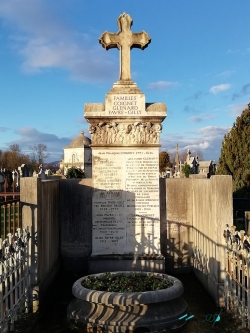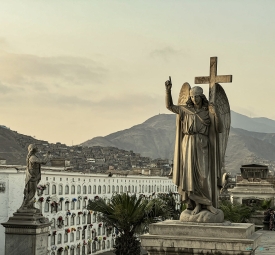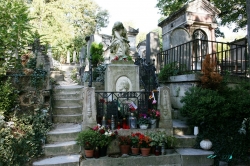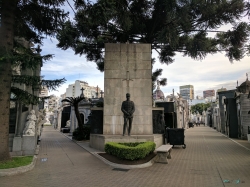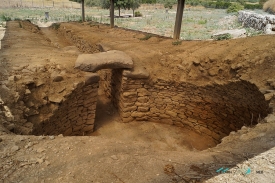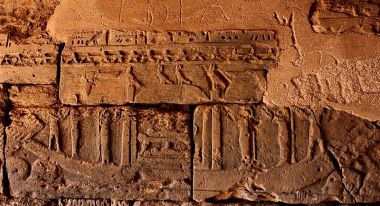ABOUT Cemitério da Consolação
The Consolação Cemetery is the oldest functioning necropolis in the Brazilian municipality of São Paulo, capital of the state of the same name. It is one of Brazil's main references in the area of tomb art, next to the São João Batista Cemetery, in Rio de Janeiro. Located in the district of Consolação, in the central region of the city, it was founded on July 10, 1858 and officially opened on August 15 of the same year, with the name of Municipal Cemetery, with an area of 76 340 m².
Its main objective at the time was to guarantee wholesomeness and prevent epidemics, as it would replace the then-recurring habit of burying the dead on the church grounds. It is one of the 22 public cemeteries administered by the Funeral Service of the Municipality of São Paulo.
With the prosperity that came from the coffee aristocracy and the emergence of an expressive bourgeoisie in São Paulo, the place started to house works of art produced by renowned sculptors, which served to ornament the graves of wealthy families and important personalities in the history of Brazil. . Its area is wooded and quiet, as opposed to the busy street of the same name. It features around three hundred sculptures and works by important artists, such as Victor Brecheret and the architect Ramos de Azevedo, who designed its main gate.
It houses a large number of graves of well-known figures, as well as personalities from São Paulo history, such as Tarsila do Amaral, Mário de Andrade, Monteiro Lobato, Ramos de Azevedo, Marquesa de Santos, Líbero Badarò and the monumental mausoleum of the Matarazzo Family, considered the largest from South America, approximately the height of a three-story building.
It maintains guided tours, by prior appointment, through the Arte Tumular project, which is coordinated by the local administration. These visits are intended to understand the works of art, the history of the environment and the people and families buried there.
Located initially on the outskirts of São Paulo, in a distant point, it ends after a growth of the coffee economy surrounded by big houses of the São Paulo elite.
Currently the cemetery is established in one of the noblest areas of the city, between the streets of Consolação, Sergipe, Mato Grosso and Cel. José Eusébio. Its accesses are through Rua da Consolação and Rua Mato Grosso. Its closest subway stations are Higienópolis-Mackenzie Station, on Line 4-Yellow and Consolação Station, on Line 2-Green.
Its main objective at the time was to guarantee wholesomeness and prevent epidemics, as it would replace the then-recurring habit of burying the dead on the church grounds. It is one of the 22 public cemeteries administered by the Funeral Service of the Municipality of São Paulo.
With the prosperity that came from the coffee aristocracy and the emergence of an expressive bourgeoisie in São Paulo, the place started to house works of art produced by renowned sculptors, which served to ornament the graves of wealthy families and important personalities in the history of Brazil. . Its area is wooded and quiet, as opposed to the busy street of the same name. It features around three hundred sculptures and works by important artists, such as Victor Brecheret and the architect Ramos de Azevedo, who designed its main gate.
It houses a large number of graves of well-known figures, as well as personalities from São Paulo history, such as Tarsila do Amaral, Mário de Andrade, Monteiro Lobato, Ramos de Azevedo, Marquesa de Santos, Líbero Badarò and the monumental mausoleum of the Matarazzo Family, considered the largest from South America, approximately the height of a three-story building.
It maintains guided tours, by prior appointment, through the Arte Tumular project, which is coordinated by the local administration. These visits are intended to understand the works of art, the history of the environment and the people and families buried there.
Located initially on the outskirts of São Paulo, in a distant point, it ends after a growth of the coffee economy surrounded by big houses of the São Paulo elite.
Currently the cemetery is established in one of the noblest areas of the city, between the streets of Consolação, Sergipe, Mato Grosso and Cel. José Eusébio. Its accesses are through Rua da Consolação and Rua Mato Grosso. Its closest subway stations are Higienópolis-Mackenzie Station, on Line 4-Yellow and Consolação Station, on Line 2-Green.



